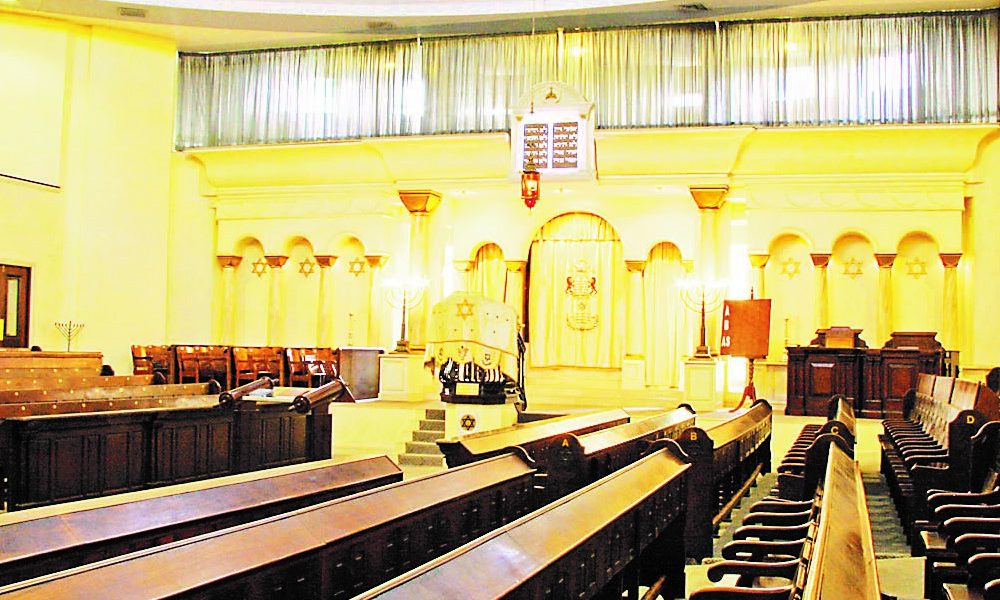SA
Continued shul closure a sign of rising infection rate
“The fact that we are keeping our shuls closed should be the clearest statement about the dangers of the current increased infection rates,” said Chief Rabbi Dr Warren Goldstein this week.

JORDAN MOSHE
Goldstein was commenting in the wake of his decision that shuls in South Africa will reopen only when there is a decline in the rate of new infections in the country.
“We would love nothing more than to open our shuls, which are so important to us spiritually, emotionally, and communally,” he told the SA Jewish Report. “We aren’t doing so, and that should be a clear sign to us all how careful we should be in all areas to protect lives and the health of the people around us.”
For the foreseeable future, experts will keep a close eye on daily infection rates, and will advise the community when it’s safe to open shul doors.
The chief rabbi’s announcement came after weeks of agonising over whether to reopen shuls. This latest decision was taken after extensive consultation with Dr Richard Friedland, the chief executive of Netcare, and Professor Barry Schoub, the founding director of the National Institute for Communicable Diseases, who outlined the criterion for reopening shuls.
“We now have a solid, transparent medical criterion for the reopening of shuls, which has been drafted by two of the country’s top medical experts in the field,” Goldstein told the SA Jewish Report.
Goldstein said that the model reflected international standards, creating a key marker for the point at which the health risks of returning to shul started to diminish. At present, the infection rate is increasing daily. It’s only when experts agree that the rate is in significant decline that the green light will be given to shuls.
“With the guidance of Dr Friedland, Prof Schoub, and a team of epidemiologists and actuaries, we will watch the trajectory of the disease closely and monitor the numbers so that we will know when things change,” Goldstein says. “This gives our community an objective and transparent criterion formulated by medical experts for return to shul. The community can track developments. There is no dependence on individual discretion. It’s all about the numbers.”
In the lead-up to Sunday’s announcement, Goldstein spent hours in consultation over Zoom with community rabbis, shul chairpersons, and shul committee members from across the country to discuss the implications of the decision. More than 80 rabbis and 90 others were in attendance, collectively expressing widespread support for the move.
“There was consensus that this is the best way forward. The unity, agreement, and team spirit has been amazing,” he said.
The strategy also makes provision for how shuls will reopen when it is deemed safe for them to do so.
“Addressing the how as well as the when is equally important,” said Goldstein. “Even when we do return to shul, it will have to be under proper health protocols. It will be essential for shuls to implement them.”
Professor Efraim Kramer, an expert in emergency medicine, has been appointed to draft and implement the relevant protocols and procedures which will apply to shuls. With a specialty in mass gatherings, Kramer is one of FIFA’s top medical officers, and recently oversaw all of the medical operations for the 2018 FIFA World Cup in Russia.
Under Kramer’s management, a committee comprising key representatives of the Beth Din, Union of Orthodox Synagogues, Hatzolah, and the Community Security Organisation will oversee the process.
“Each shul will have a COVID marshal, a responsible team leader who will be appointed to ensure the shul’s compliance with all protocols,” said Goldstein. “Prof Kramer has agreed to train them, and will make sure that they monitor our shuls on an ongoing basis.
“He will personally undertake onsite inspections of our shuls to help set up the infrastructure and processes and ascertain each shul’s readiness. Every shul that wants to open when the situation improves will have to meet him.”
Kramer has agreed to travel to each shul individually, including those in Durban and Cape Town. Onsite inspection will involve an evaluation of the shul’s size, spacing, community size, and will include proper training in sanitisation procedures.
This approach is one of the best under the circumstances, Schoub said.
“The model has been developed by a team of experts, and is very stable,” he says. “It reflects a position which is most appropriate under the circumstances.”
Models aren’t infallible, he cautioned. “They do have a certain degree of latitude, but are essential for planning. We have a scientific background available for decision making, and our basic idea is to wait until we’re over the peak before we decide it’s safe to go back to shul.”
Schoub stressed that the decision was based on hard scientific data, and would rely on the collection of more data as time passes, including hospital admissions, tests results, and the like.
“Things can and do change, but the optimistic scenario is that Johannesburg will peak in July, with Cape Town peaking sooner,” Schoub said. “It may well be that shuls in Cape Town will open sooner, but we will have to monitor the situation closely. We need to address this nationally, regionally, even by suburb if need be.”
Goldstein expressed his confidence in the expertise of Schoub, Friedland, and Kramer.
“Not only are they of high calibre professionally, all three of them are regular shul-goers,” he said. “They understand what’s at stake here, and truly appreciate the value of shul.”